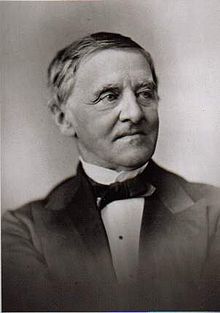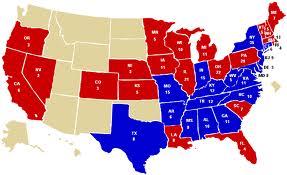The election of 1876 was one of those elections like the election of 1824 in which the loser of the election became the president. Unlike such previous disputed elections, such as the elections in 1824 and 1800, the problem in 1876 was not that no candidate achieved a majority there were only two candidates, or that there was some quirk in the electoral process. The problem with the election of 1876 was a combination of outright fraud and confusion in counting the ballots in the three remaining states of the former Confederacy that were still occupied by federal forces; South Carolina, Florida, and Louisiana.
The year 1876 was the centennial of the United States. The year began with great celebration for the one hundred years that the nation had been independent. The feelings of most people were optimistic and cheerful about the future. America had, to be sure, fought a terrible Civil War only a decade before, and the South was still rebuilding. Still,the country was prosperous and at peace, and was rapidly settling the West.
The campaign season began well. President Ulysses S. Grant had wanted to run for a third term but between the two term tradition and the series of scandals that had marred his administration, there was little enthusiasm for Grant. In fact the most important issue of the election was reforming the civil service and ending corruption in government. Therefore, both parties wanted reforming candidates untouched by any unsavory associations. This ruled out Congressman James G. Blaine, a Republican from Maine who had had some apparently unethical dealings with the Union Pacific Railroad. Instead, the Republicans nominated Rutherford B Hayes, the reforming Governor of Ohio. The Democrats nominated Samuel J. Tilden from New York. He had prosecuted Boss Tweed when he served as District Attorney and as Governor, he had fought the Canal Ring.

The candidates were both honest men and there wasn’t much difference in the two party platforms, so naturally, to keep things interesting, both sides attacked each other ferociously, making this election one of the nastiest elections in history. The Democrats were delighted to point out the corruption in the Grant administration and in the Reconstruction governments in the South. The Republicans accused the Democrats of being traitors who had supported the Confederacy during the war. The real fun though, did not begin until after the election.

When the votes were counted, Tilden won the popular vote over Hayes by 4,300,000 to 4,000,000. The electoral vote was what counted, though, and here things were less certain. To win in the electoral college required 185 votes. Tilden received 184 votes, mostly in the south but including New York and Indiana, while Hayes got 165 votes in the north and west. There was a problem with four states; Oregon, South Carolina, Florida, and Louisiana.
Oregon was relatively simple. Hayes had won the popular vote there, but one of the electors was a postmaster and the constitution does not permit federal office holders to be electors. The Democratic governor of Oregon selected a Democrat to replace him. The Republicans announced that Hayes had won Oregon’s three electoral votes, while the Democrats insisted that the correct count was one for Tilden and two for Hayes.
The Southern states were more difficult. To say that the elections were marked by fraud would be a tremendous understatement. There was marked voter intimidation. The Democrats tried to keep as many Blacks from voting as they could, while the Republicans tried to make sure the Blacks could vote as many times as they wanted. There was bribery, ballot box stuffing, and outright fraud. It will probably never be certain who actually won in South Carolina, Florida and Louisiana but Louisiana and Florida sent in two sets of returns while Florida managed to come up with three.
Congress had the responsibility of deciding which returns accurately reflected the votes in the disputed states. It was an act that would be sure to create controversy no matter what they decided. As it happened the House of Representatives was controlled by the Democrats, while the Republicans had the majority in the Senate. The two houses fought bitterly but finally agreed to establish an Electoral Commission composed of five Senators, five Representatives, and five Supreme Court justices. Eight of these men were Republicans and seven were Democrats, and somehow all of their votes ended up being 8 to 7 in favor of Hayes, making Rutherford Hayes the next president.
Naturally, the Democrats were not at all happy with this result, especially in the south. They accepted the decision of the commission without any serious trouble though. Tilden urged acceptance of the decision and many southern Democrats came to believe that Hayes was a president they could work with. Democratic leaders met with their Republican counterparts, even while the commission was working and agreed to accept whatever the decision of the commission might be in exchange for the next president agreeing to remove the remaining federal troops out of the South. The compromise of 1877 preserved the Union and ended what could have been a very messy political crisis. It also ended the Reconstruction Era and helped to heal the divisions caused by the Civil War. Unfortunately it also meant abandoning the cause of civil rights for the freed slaves. Southern Democrats swiftly took control of the southern state governments and disenfranchised the Blacks as soon as they could. They would have to wait almost another century to get there rights.
Rutherford B. Hayes turned out to be a decent president who pushed for civil service reform. He wasn’t able to do very much because of the circumstances of his election and decided not to run again in 1880.



